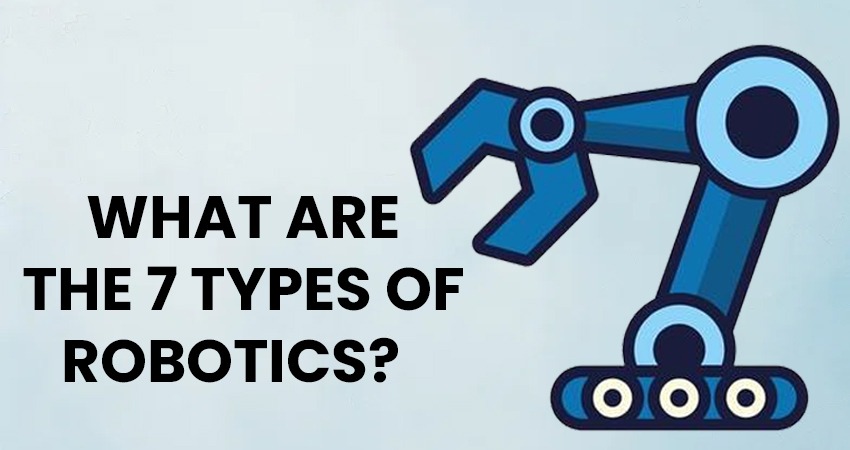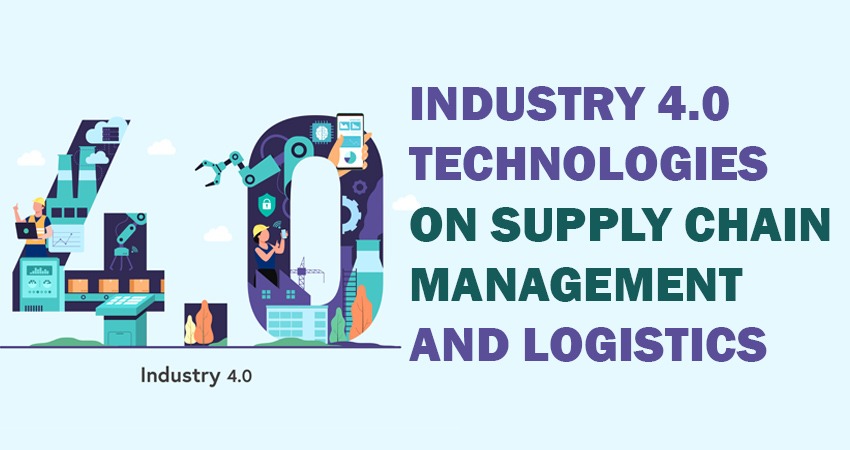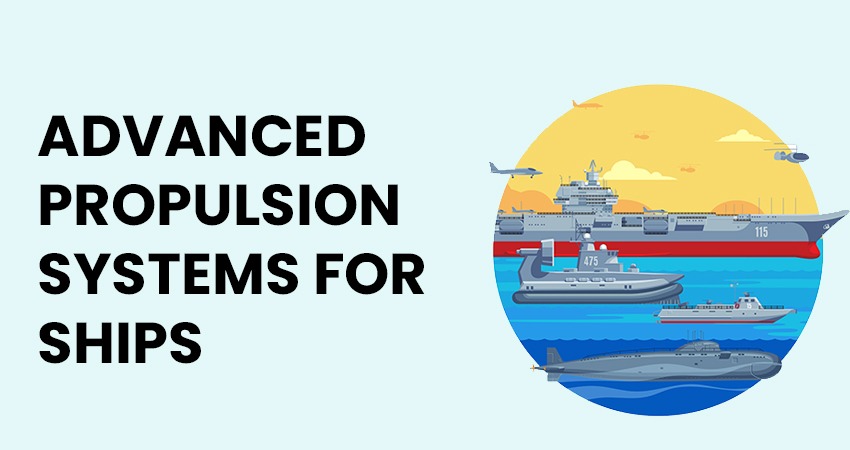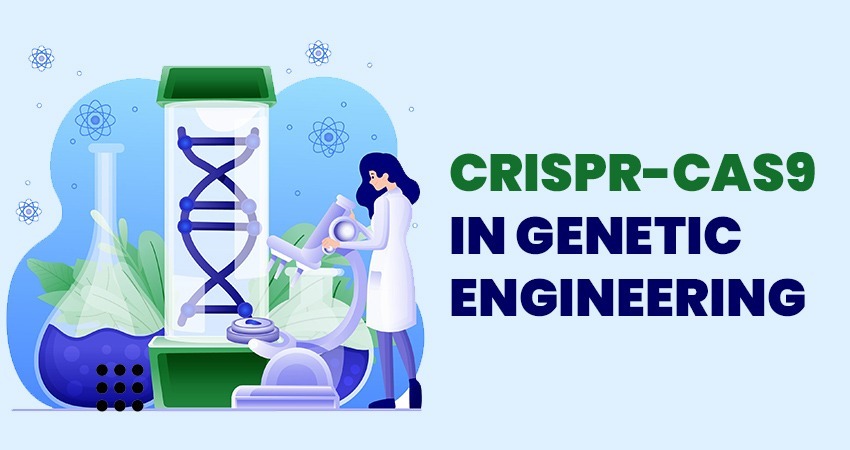User Ideas / Prospects

Robotics is shaping the world like never before. Robots have made a decisive entry into modern life, from industries to homes. But did you know different types of robotics have been designed to complete various jobs? Identifying these categories helps us understand how quickly technology is progressing.
Regarding Engineers Heaven, our mission is to educate and inspire by sharing knowledge about robotics, automation, etc. To understand this, we must dive into the seven types of Robotsand what they do.
Autonomous Mobile Robot (ARMs)
Mobile Robots (AMRs) can navigate the environment without human intervention. They are equipped with sensors, artificial intelligence, and machine-learning systems that enable them to navigate independently of direct human control.
These robots are commonly deployed in warehouses, hospitals, and even residences. They assist with logistics, surveillance, and delivery services. AMRs are used in warehouse automation, and companies like Amazon have leveraged their power to make their operations faster and smoother.
AGVs (Automated Guided Vehicles)
AGVs, on the other hand, follow a predefined path, unlike AMRs. They use tracks, magnetic strips, or predefined routes to transport goods.
AGVs are seen everywhere in factories and large warehouses. They expedite production by transferring materials without human involvement. Industries deploy them and use themto cut down on labor expenses and increase workplace safety.
Articulated Robots
Robots that have multiple joints make it possible to move precisely. That looks like a human arm , also called a robotic arm.
Articulated Robots Industrial robots are frequently seen in factories, welding job sites, painting job sites, and assembly lines. So, how does this make them suitable for repetitive action with extreme accuracy? They are critical in the automobile and electronics sectors.
Humanoid Robots
Humanoid robots have human appearance and human capabilities. They have arms, legs, and even facial expressions. They exist to converse with humans in the way we do.
These robots are employed in customer service, education, and even healthcare. This one is Sophia, a famous humanoid robot known for being an example of bringing AI into social situations. Humanoid robots help older adults; They accompany older people and support them.
Cobots (Collaborative Robots)
Cobots are not intended to substitute for human workers; rather, they are intended to work side by side with them. They help workers by doing dangerous or repetitive jobs.
Those robots are used every day in industries where safety and efficiency are concerned. They assist on assembly lines, in medical settings, and in research. Unlike traditional robots, cobots don't require protective enclosures. They detect the presence of humans and adjust to collaborate safely with them.
Industrial Robots
Industrial robots are designed for challenging work. They are robust, accurate, and don't tire after working hours.
Industrial robots are commonly used in the automotive, electronics, and metal industries. They do the lifting, cutting, welding, and packaging. Due to their standardization, industrial robots are an efficient way to ensure quality production while lowering costs. They form the backbone of contemporary manufacturing.
Swarm Robots
Swarm robotics is closer to nature, particularly of the social variety found in creatures such as bees or ants. Particular robots operate in groups, using basic rules to accomplish complex actions.
Nevertheless, swarm robots are employed in search and rescue, medical applications, environmental monitoring, etc. They can operate in hazardous environments where humans cannot even proceed. Cooperation makes them well-suited for significant accomplishments.
The Future of Robotics
The field of robotics is changing at a remarkable pace. Animal obesity is a big problem, but as AI and machines lessen, they'll become more intelligent and autonomous. The range of possibilities is vast, from self-driving cars to robotic surgeons.
In Engineer’s Heaven , We believe in being ahead of the curve. So, in case it helps, get lost in our deep ocean of information about the latest advancements in robotics and engineering. Engineers Heaven – Your Gateway to the Future of Technology for Students, Professionals, and Enthusiasts Join Engineers Heaven for more info on robotics and engineering and keep up with the automation revolution!
(Disclaimer: This statistics could be different in different part of World and Different timeline. this statistics has been generated based on data available till 2025 or relavant time span.)

The global supply chain is the backbone
of the world's economy. It connects manufacturers, suppliers, and consumers
across continents. However, traditional supply chain systems are often plagued
by inefficiencies, delays, and high costs. These challenges have long demanded
innovative solutions, and Industry 4.0 technologies have risen to the occasion.
Industry 4.0, also known as the fourth
industrial revolution, is changing supply chain management and logistics in
extraordinary ways. It includes advanced technologies like artificial
intelligence, the Internet of Things, big data, blockchain, and robotics. These
all together enable business to optimize its operations, cut costs, and provide
seamless service to customers.
Industry 4.0
Changing Supply Chains from Reactive to Predictive
1. One of the most important changes brought about
by Industry 4.0 is from reactive to predictive supply chain management.
Traditionally, companies reacted to problems as they arose—whether it was a
delayed shipment, a stockout, or mismanaged inventory. Now, with Industry 4.0,
organizations can anticipate and address potential issues before they escalate.
2. IoT plays a central role in this predictive
approach. Smart sensors are embedded in devices and shipments to collect
real-time data that can provide actionable insights into every stage of the
supply chain. For instance, such sensors can track the location and condition
of goods in transit, monitoring factors like temperature, humidity, or
potential delays. If a problem arises, such as a temperature spike during the
transport of perishable items, the system automatically sends an alert. This
level of visibility ensures the quality is achieved and losses at minimum.
3. Logistics and supply chain management rely on
artificial intelligence to drive the efficiency and accuracy of operations. Big
data analysis lets AI identify complex patterns, predict requirements, and
decide on the better course of actions.
4. For instance, AI-powered tools can forecast
market trends, enabling businesses to anticipate high-demand periods and adjust
inventory levels accordingly. This minimizes the risk of stockouts during busy
seasons and prevents overstocking during slower months.
5. AI is also being used in logistics to optimize
delivery routes. Delivery trucks, equipped with AI-powered navigation systems,
take the most efficient routes, saving time, reducing fuel consumption, and
improving on-time delivery rates. This level of optimization not only reduces
operational costs but also enhances customer satisfaction.
Big Data for
Informed Decisions
Industry 4.0 is based on big data, which
enables companies to make decisions based on data. The data generated by IoT
devices, AI systems, and digital tools can be too voluminous to be analyzed.
However, advanced analytics tools can process such data and bring out
meaningful insights.
For instance, through big data, companies
can look at seasonal trends in demand. Retailers will be able to predict peak
periods of shopping to ensure they stock the right items. In addition, big data
gives businesses the chance to spot bottlenecks and underperforming suppliers
in the supply chain and then take corrective actions.
Increasing Transparency with Blockchain
Blockchain technology has revolutionized
the matter of transparency and trust in supply chain management. This
decentralized digital ledger records every step in the supply chain, producing
a secure and tamper-proof record.
Sensitive or high-value product
industries such as food, pharmaceuticals, and luxury goods find blockchain
quite helpful. A customer can track back a product to its source to ascertain
authenticity and ensure proper sourcing. In the food industry, for instance,
blockchain would be able to track the history of produce from farm to table so
that customers could have confidence in the safety and quality of foodstuffs.
The Automation
and Robotics transforming the operations
Automation and robotics take over the
management of warehouses and factories. The traditional functions like sorting,
packing, and handling stocks are carried out by automated systems. Robots are
always at work, faster than humans and do not make human mistakes hence
improving productivity.
This, using such technologies as robotic
arms and automated vehicles allows organizing the work process efficiently and
minimizing the number of employees. This assists the business to manage large
amounts of goods and at the same time satisfy the needs of the modern market.
Visit Engineer’s Heaven to know more about, and learn from the expert community
(Disclaimer: This statistics could be different in different part of World and Different timeline. this statistics has been generated based on data available till 2025 or relavant time span.)

Computational Fluid Dynamics (CFD) has really changed the analysis and
design fluid systems by the engineers. The fluid flow aspect is one of the
critical areas in the designing of mechanical equipment to be effective and
reliable. CFD solves complex fluid-related challenges that become an
indispensable tool for engineers; it enables engineers to simulate and
visualize fluid systems before making prototypes.
At Engineers Heaven, we always put emphasis on CFD in Mechanical Engineering. Be it designing industrial pumps, turbines, or HVAC systems, CFD
can help you enhance your design process. In this blog, we shall explore how
CFD is applied in fluid systems and equipment design.
What Is
Computational Fluid Dynamics?
CFD is a branch of fluid mechanics. It uses numerical analysis and
algorithms to simulate fluid flow. With CFD, engineers solve problems related
to fluid motion, heat transfer, and interactions with solid surfaces. It
combines physics, mathematics, and computer science to provide accurate
results.
CFD software subdivides the fluid space into tiny elements. With the
help of those elements, pressure, velocity, and temperature can be computed in
the system. It will provide an insight into flow patterns, thereby indicating
any issues in the design.
Why to Apply CFD
in Design?
Traditional analysis methods for fluids take much time. Prototypes for
testing take time and money to prepare. The application of CFD provides an
inexpensive approach. Detailed insight without actual physical testing at early
stages can be derived.
CFD saves time, cuts costs, and is more accurate. Engineers can test
different designs under different conditions. They can also optimize
performance to meet specific requirements.
Applications in
Fluid Systems
Fluid systems design involves the use of CFD widely. Below are some
key applications:
Pumps and
Turbines
CFD enables engineers to design energy-efficient pumps and turbines.
It analyzes flow patterns, pressure losses, as well as the risk of cavitation.
Engineers can modify designs for better efficiency and lower wear.
HVAC Systems
CFD optimizes airflow in heating, ventilation, and air conditioning
(HVAC) systems. It ensures uniform temperature distribution and improves energy
efficiency.
Piping Networks
Fluid flow in piping networks is complex. CFD identifies bottlenecks
and pressure drops. It helps optimize the layout and size of pipes for smoother
flow.
Aerospace
Applications
In aerospace engineering, CFD improves aerodynamics and fuel
efficiency. Engineers use it to design jet engines, nozzles, and airfoils.
Automotive
Industry
CFD enhances vehicle performance. It optimizes cooling systems,
exhaust flow, and fuel injection. It also improves aerodynamics for better
speed and fuel efficiency.
Applications in
Equipment Design
CFD is equally valuable in equipment design. The engineers use it to
analyze and improve the performance of equipment. Here are some examples:
Heat Exchangers
Heat exchangers are critical in various sectors. CFD ensures effective
heat transfer and minimizes pressure losses.
Compressors and
Blowers
CFD helps design compressors and blowers with minimal energy loss. It
improves reliability and reduces noise levels.
Mixing Equipment
In chemical and food industries, mixing is a crucial process. CFD
optimizes the mixing equipment by analyzing the behavior of the fluid.
Valves and
Fittings
Fluid flow is regulated by valves. CFD ensures proper valve operation
by analyzing pressure and flow distribution.
Benefits of CFD
The following are the benefits that CFD offers to engineers:
●
Improved Performance: It uncovers wastes and
optimizes the operation of the system.
●
Cost Reduction: CFD helps to reduce the amount of
physical prototypes, which saves money.
●
Better Understanding: Engineers can understand
the flow behaviour and make decisions.
●
Fastest Design Cycle: It reduces the designing
stage by early detection of defects
Conclusion
CFD is a revolution in mechanical engineering. It enables the designer
to be accurate and quick while designing the fluid systems and equipment. In
CFD, engineers are able to analyze problems and design for improved
performance.
At Engineers Heaven, we always try to provide the right knowledge and
tools such as CFD to engineers. This site provides you with the information,
tools, and advice needed to achieve your goals.
Visit Engineer’s Heaven today and get more information about the
engineering tools, methods and new technologies. Make your design process
simple and take your engineering skills to the next level.
(Disclaimer: This statistics could be different in different part of World and Different timeline. this statistics has been generated based on data available till 2025 or relavant time span.)

The marine industry has undergone the most dramatic revolutions. Ships
formerly powered by mere sails and even steam engines currently rely on really
advanced propulsion. These systems constitute the core or backbone of
efficiencies, sustainability, and performance. Within the modernized world,
constantly evolving demands continuously challenge marine engineers to innovate
solutions.
The operation of ships relies centrally on propulsion systems. These
are what define the speed, the consumption of fuel, and environmental impact.
Due to increased trade on a global level, it has been more crucial than ever to
enhance marine propulsion systems. Engineers have targeted systems that achieve
performance with sustainability.
Conventional
Propulsion Systems
Traditionally, ships used steam engines and diesel engines. These
systems were robust and reliable. However, they came with limitations. Steam
engines consumed large amounts of coal and water. Diesel engines improved
efficiency but contributed significantly to pollution.
Over time, the systems were improved. Contemporary diesel engines
consume lesser fuel and cause fewer emissions. However, there was still room
for improvement. The marine sector was crying for innovation. Society was in
need of cleaner and efficient technologies. These developments brought forward
the latest advanced propulsion systems.
Innovative
Propulsion Solutions
1. LNG-Fuelled Engines
LNG is a cleaner fuel compared to the traditional fuels. The carbon
dioxide and sulfur oxides emitted by LNG engines are less. They are gaining
popularity in the shipping industry. The ships that run on LNG are not only
environmentally friendly but also economical in the long term.
2. Hybrid Propulsion Systems
Hybrid propulsion uses a combination of diesel engines and electric
motors. The systems are less fuel-hungry and produce fewer emissions. Hybrid
ships can run on electric power when navigating sensitive areas, such as ports.
This limits air and noise pollution.
3. Fuel Cells
Fuel cells are another innovative technology. They use hydrogen to
produce electricity. The byproduct is only water. Fuel cells are quiet,
efficient, and environmentally friendly. Many companies are exploring their use
in ships.
4. Wind-Assisted Propulsion
Wind is back in vogue for modern shipping. Advanced sails and rotor
systems can harness wind energy to reduce the fuel consumption significantly.
Though they cannot replace the engine entirely, the savings of wind-assist
technologies are tremendous.
5. Nuclear Propulsion
Nuclear propulsion is not a new concept but is gaining renewed
attention. It is used in military vessels and icebreakers. Nuclear-powered
ships can run for years without refueling. However, challenges like safety and
high costs limit their use in commercial shipping.
Benefits of
Advanced Propulsion Systems
The shift to advanced propulsion systems offers many benefits. These
include:
●
Less Pollution: The new generation of systems has
been designed in accordance with stringent environmental regulations. They
reduce greenhouse gases and other harmful pollutants.
●
Economical Efficiency: Fuel-saving engines reduce
operational costs. In the long run, this saves money for ship operators.
●
Better Performance: Advanced systems provide
better speed and maneuverability. This increases the overall performance of
ships.
●
Sustainability: The marine industry contributes
to the global sustainability agenda by embracing clean technologies.
Development
Challenges
Despite the progress, challenges remain. Advanced propulsion systems
require significant investment. Not all shipping companies can afford these
technologies. Infrastructure, such as LNG fueling stations, is still limited in
many ports. Additionally, training crew members to operate new systems takes
time and resources.
Another challenge is the balance between innovation and safety. Ships
must comply with international safety standards. Engineers must ensure that
advanced systems are reliable and secure.
Roles for Marine
Engineers
At the spearheading end, one finds the role of a marine engineer, in
charge of advanced propulsion system designing, testing, and implementations.
His is molding the face of tomorrow for the maritime industry.
A rewarding dynamic career field with ample use for creativity and
solution development. If any aspiring candidate feels an apt fit into such
roles, proper upkeep with trendy innovations should also follow.
If you are interested in Marine Engineering, then Engineers Heaven is
the place for you. Visit Engineer’s Heaven to explore resources, training
programs, and industry insights. Stay ahead in your career with the latest
updates and expert guidance.
(Disclaimer: This statistics could be different in different part of World and Different timeline. this statistics has been generated based on data available till 2025 or relavant time span.)

Genetic engineering has changed the
world of science. It has made impossible things possible. At the heart of all
these advancements is CRISPR-Cas9. This tool has revolutionized the way genes
are edited. It is fast, precise, and cost-effective. But how exactly does it
work, and why is it so revolutionary? Let's explore.
What is CRISPR-Cas9?
CRISPR stands for "Clustered
Regularly Interspaced Short Palindromic Repeats." It's a naturally
occurring system in bacteria. These little guys use this mechanism to resist
viruses. In other words, it is this Cas9, which is like the molecular scissors:
the DNA would get cut off at that spot.
Scientists discovered that this system
could be applied in genetic engineering. They guide Cas9 to a specific gene and
cut or modify DNA by doing so. This has now opened doors to endless
possibilities.
How Does CRISPR-Cas9 Work?
The process is simple. First, scientists
design a guide RNA (gRNA). This RNA is complementary to the DNA sequence they
wish to target. The guide RNA guides Cas9 to the targeted site in the genome.
Once at the site, Cas9 cuts the DNA.
After the cut, the cell repairs the DNA.
Scientists can manipulate this repair. They can delete, modify, or insert
genes. This makes CRISPR-Cas9 so powerful.
Applications of CRISPR-Cas9
CRISPR-Cas9 is not only a scientific
tool. It is the solution to many real-world problems. Its applications are
vast, from healthcare to agriculture and even environmental science.
1. Medicine
CRISPR is a game-changer in medicine.
Scientists use it to treat genetic diseases such as sickle cell anemia and
cystic fibrosis. These diseases result from faulty genes. CRISPR can correct
these errors at the DNA level.
CRISPR also holds promise in cancer
research. By editing immune cells, scientists can enhance their ability to
fight tumors. This is already being tested in clinical trials.
2. Agriculture
The agricultural industry has greatly
benefited from CRISPR. Crops can now be engineered to resist pests and
diseases. They can also be made more nutritious and better suited to changing
climates.
For instance, CRISPR has been used to
develop fungal-resistant wheat. It has also enhanced the yield and quality of
rice.
3. Environmental Science
CRISPR is also helping solve
environmental problems. Scientists are researching its application in
eradicating invasive species. Others are using it to minimize the carbon
footprint of industries.
For example, scientists are engineering
algae strains that absorb more carbon dioxide. This can significantly reduce
greenhouse gases.
The Advantages of CRISPR-Cas9
Why has CRISPR-Cas9 been in the
spotlight? For good reason:
● Accuracy: CRISPR locates and identifies
specific genes with high precision.
● Speed: The process is quicker than the traditional genetic engineering methods.
● Cost-Effectiveness: It is less expensive,
thereby increasing its reach among researchers.
It can be used in almost all fields of
science.
Ethical Issues
Despite the benefits, CRISPR-Cas9 raises
ethical concerns. The use of human embryos for editing is a controversial
issue. Many are concerned about its misuse, such as creating "designer
babies."
There are also concerns about unintended
edits. CRISPR is precise, but off-target effects can occur. Scientists are
working hard to minimize these risks.
Governments and regulatory bodies play a
crucial role here. Clear guidelines are essential to ensure ethical use.
The Future of CRISPR-Cas9
The potential of CRISPR-Cas9 is endless.
Researchers are trying to make it even more accurate. They are also studying
its application in space. Imagine editing genes to grow crops on Mars!
In the next years, CRISPR may end genetic
diseases. It can produce crops that feed the world. It can even reverse
environmental damage.
A Resource for Aspiring Engineers
If you are interested in such
revolutionary technologies, the good news is there for you. Engineer's Heaven is
a great place where your inquisitiveness would be fueled.
Go to Engineer’s Heaven for such great
articles and resources. It is a hub for education and innovation. Whether you
are a student or a professional, the platform provides something for everyone.
You will get updates on emerging
technologies such as CRISPR. You will learn more tools to improve your skills
also.
(Disclaimer: This statistics could be different in different part of World and Different timeline. this statistics has been generated based on data available till 2025 or relavant time span.)
